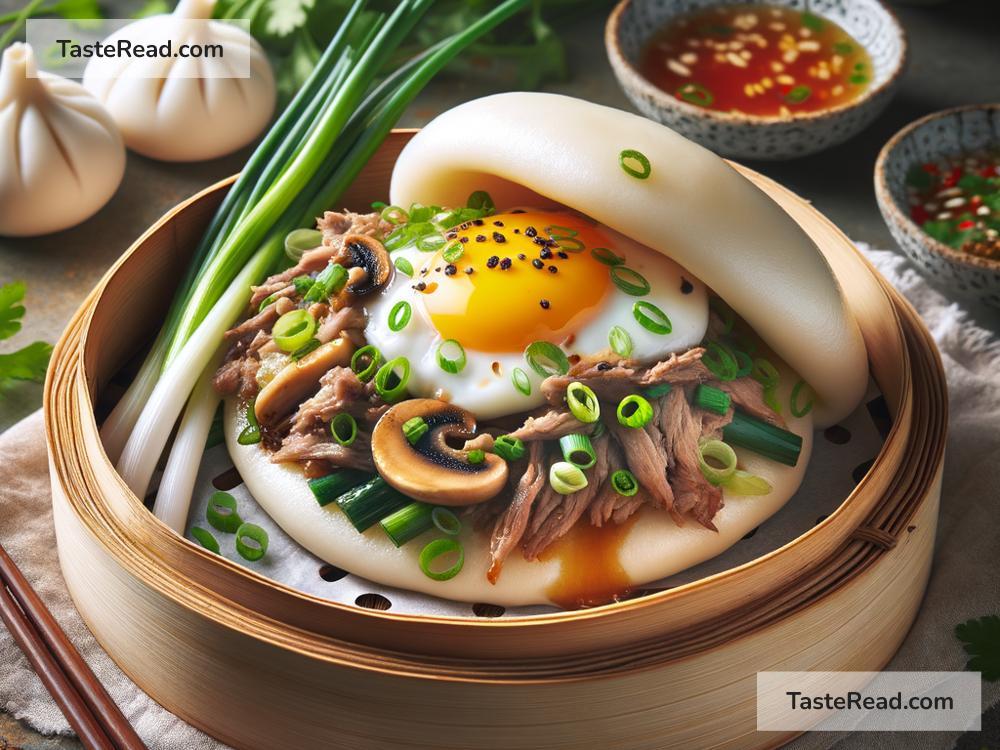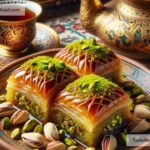Celebrating the Heritage of Vietnamese Bánh Bao Buns
When people think of Vietnamese cuisine, dishes like pho and bánh mì often come to mind first. But there’s another delightful food that holds a special place in Vietnam’s culinary heritage: bánh bao. These soft, fluffy steamed buns are more than just tasty treats—they carry cultural stories, family traditions, and even a hint of history. In this blog, we’ll explore the heritage of bánh bao and why these buns deserve celebration.
What Is Bánh Bao?
Bánh bao is a type of steamed bun made with a soft, airy dough. Inside the bun is a rich filling, traditionally made with seasoned pork, quail eggs, vegetables, and sometimes mushrooms. There are many variations of bánh bao—you’ll find buns with chicken, beef, or even sweet fillings like mung bean paste.
The word “bánh” in Vietnamese means cake, pie, or bread, while “bao” comes from the Chinese word for “wrap.” Together, bánh bao translates to “wrapped bread.” This name perfectly describes what the dish is: fluffy bread that wraps around a delicious filling, completely sealed inside.
A Connection to Chinese Cuisine
Bánh bao has cultural roots tied to Chinese baozi, which are steamed buns often stuffed with savory or sweet fillings. Vietnam’s proximity to China influenced its food culture, and bánh bao is one of many dishes that evolved from Chinese culinary traditions. Over time, Vietnamese cooks adapted the recipe to suit local tastes, using spices, ingredients, and cooking styles that reflect Vietnam’s unique food heritage.
What sets bánh bao apart is its distinct flavor and soft texture that comes from the delicate balance between sweet and savory elements. The fillings are well-seasoned and sometimes include fish sauce, a staple in Vietnamese cooking, giving bánh bao a flavor profile that sets it apart from its Chinese cousin.
A Breakfast Favorite
In Vietnam, bánh bao is commonly enjoyed as a breakfast food or a quick snack. Street vendors sell freshly steamed bánh bao early in the morning to busy parents, students, and workers on their way to start the day. The convenience of this handheld bun makes it perfect for eating on the go, and its warm, comforting taste has turned it into a beloved staple.
Traditionally, bánh bao is steamed fresh in bamboo baskets, which keep the buns moist and fluffy. There’s something magical about biting into a warm bánh bao—its softness wraps around the filling like a cozy blanket, bursting with flavor in every bite.
More Than Just a Bun
For many Vietnamese families, bánh bao is much more than food; it’s part of a tradition. Making bánh bao at home is a family activity that allows people to bond and pass down cooking techniques. From kneading the dough to stuffing the buns, each step is a shared experience. Parents teach their children how to fold and shape the buns so they’re perfectly sealed, ensuring the filling stays intact during steaming.
In some households, bánh bao is prepared for special occasions. Festivals, family gatherings, and even religious ceremonies may include bánh bao as a comforting dish that symbolizes warmth and togetherness. Its connection to tradition makes bánh bao more meaningful than its simple appearance suggests.
Modern Twists and Global Appreciation
While bánh bao started as a traditional dish, modern adaptations have introduced creative twists to this beloved bun. Today, chefs across Vietnam and the world experiment with fillings like BBQ pork, cheese, or even chocolate. Fusion versions of bánh bao are served in trendy restaurants, blending Vietnamese culinary techniques with global flavors.
This creativity has helped bánh bao gain international recognition. Vietnamese communities around the world take pride in sharing bánh bao with friends and neighbors, making it a part of global food culture. In recent years, bánh bao has appeared in more and more bakeries, cafes, and Asian cuisine restaurants outside of Vietnam, giving people everywhere the chance to experience this delightful dish.
Celebrating Bánh Bao Heritage
The heritage of bánh bao lies in its simplicity and its ability to bring people together. This humble bun reflects Vietnamese ingenuity—taking influences from neighboring countries and transforming them into something uniquely Vietnamese. It tells the story of Vietnam’s rich food culture, shaped by tradition, family, and the joy of sharing meals.
Celebrating bánh bao means remembering its roots and appreciating the love and care that goes into making it. Whether enjoyed as a quick snack or savored at a family gathering, bánh bao carries with it the flavors of history, culture, and community.
So, the next time you see a soft, steamed bánh bao, take a moment to appreciate the work behind it. Every bite connects you with generations of Vietnamese culinary traditions, passed down through the years. It’s more than food—bánh bao is a small but meaningful reminder of Vietnam’s unique heritage. Warm, flavorful, and comforting, these buns deserve a special place in the heart—and on the table.
Wrapping It Up (Just Like the Bun!)
Bánh bao might look simple, but its cultural significance and rich history are anything but. From its Chinese roots to its place in modern Vietnamese cuisine, bánh bao has stood the test of time, evolving while still remaining true to its origins. As we celebrate the heritage of bánh bao, we honor not just the bun itself, but also the people and traditions that have kept it alive and thriving.
So why not try making bánh bao at home or tasting it at a local Vietnamese restaurant? Through simple, flavorful foods like bánh bao, we can share in the beautiful heritage of Vietnam—one fluffy bun at a time.


